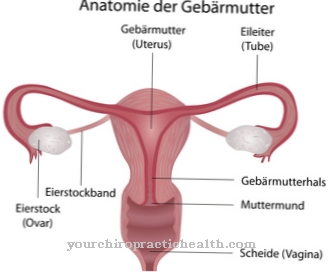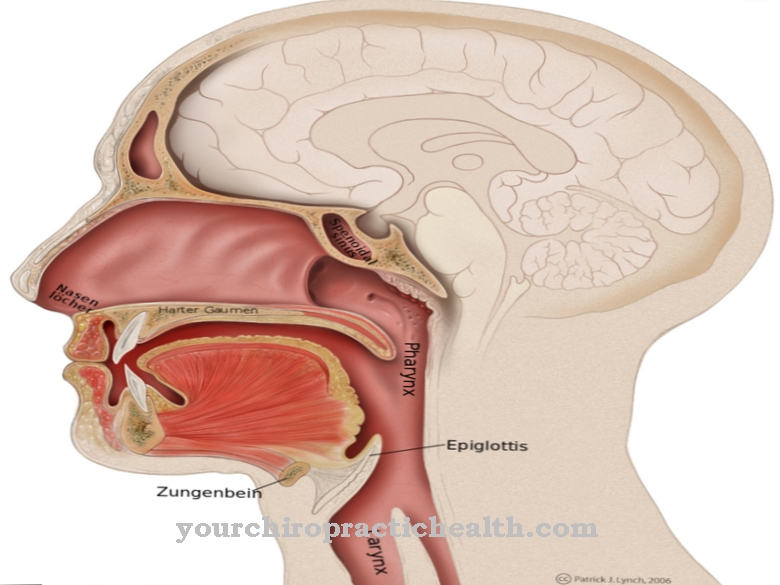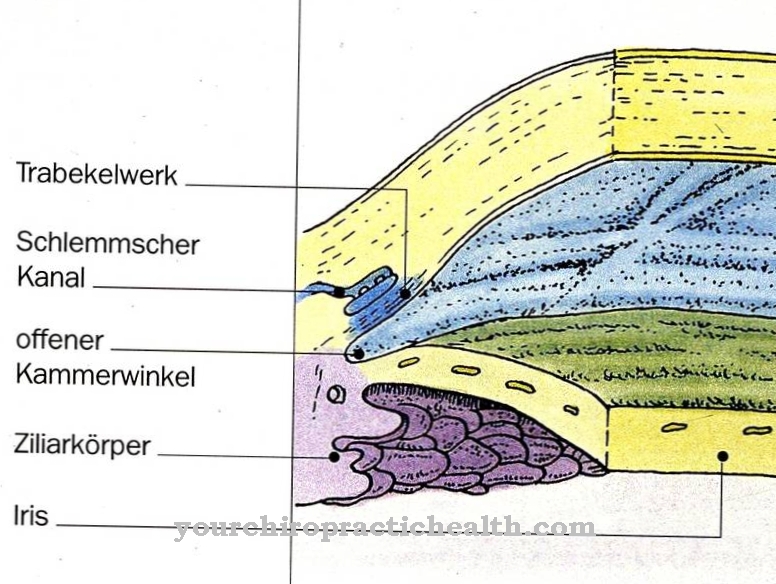The Incisors of the human dentition are single-rooted teeth, which are located in the front part of the lower or upper jaw and are often colloquially called "shovel teeth".
What are incisors?
The four teeth in the lower and upper jaw, which are located between the canine teeth and have a pointed cutting edge or a shovel-shaped shape, are called incisors. Incisors do not have a chewing surface and the lower incisors are smaller than the upper ones.
Anatomy & structure
The incisor is what is known as a front tooth, which is shovel-shaped and can be found in the front of the jaw. In about the second year of life, the eight deciduous incisors are replaced by permanent teeth.
In adolescents, the cutting edge is divided by two incisions, while in adults these are usually ground down. The tooth crown has two marginal ridges on the back, these meet in the so-called tuberculum, a structure that has the shape of a cusp. The foramen caecum lies above it. In human dentition, the following incisors can be distinguished in the lower and upper jaw:
- Central incisor in the lower jaw 31/41
- Lateral incisor in the lower jaw 22/42
- Middle incisor in the upper jaw 11/21
- Lateral incisor in the upper jaw 12/22
The central incisors have three notches, the lateral two and one notch can be seen in the canine area. Over time, however, the incisal enamel edge will wear out due to tooth abrasion, tooth erosion or wear and tear. This creates a uniform cutting edge. There are clear differences in size in the upper jaw between the lateral and central incisors, and the incisors that can be found in the lower jaw are also smaller.
The lower incisors have only one root that is severely flattened. The roots of the incisors are relatively weak and therefore not suitable for post restorations. The lower incisors are the smallest teeth in human dentition. Their labial surfaces are smooth and have a triangular basic shape. The tooth necks are pointed and narrow. The lingual surfaces are also triangular, but slightly narrower.
The approximal surfaces have the shape of an acute-angled triangle and the curvature feature can be seen on the contour. The lower incisors are also very delicately built and are therefore not an option for a crown replacement. In addition, the base of the crown is quite narrow, so it is not possible to grind the teeth without making them thin. For aesthetic reasons, they are also unsuitable as clasp teeth.
Function & tasks
Since the incisors have a sharp cutting edge, they are needed for biting off food. So they work like a small knife and have no chewing surface. The basis for an optimal cutting quality is a good contour of the cutting edges, which can be lost due to the aging process.
In addition, the incisors are also of visual importance, as they belong to the front teeth. If they are discolored, crooked or broken off, this appears unaesthetic and unattractive. From an aesthetic point of view, the central upper incisors dominate, which are noticeable due to their size and are very visible when smiling and speaking.
You can find your medication here
➔ Medication for toothacheDiseases
Caries can develop on the incisors, a disease caused by bacterial pathogens. In the front teeth, the neck of the tooth is particularly at risk. Tooth decay is caused by irregular oral hygiene, so that food particles can collect in the spaces between them.
Due to special end products that are released during the metabolism, damage to the tooth substance or caries occurs. As a result, there is toothache and sometimes even tooth loss. Root inflammation can also occur in the incisors. This, too, is usually caused by tooth decay, as the caries bacteria can attack the dental nerve if left untreated. The inflammation irritates the nerves and in the worst case the tooth nerve can die.If the bacteria reach the tip of the root, the jawbone can also be attacked. The remedy is usually a root canal treatment in which the tooth is opened with the help of a drill. This can remove the pulp and nerve fibers. The dentist then rinses the canal with various solutions.
In the case of severe inflammation, the tooth must rest for a few days; in the case of lighter inflammation, the canal is filled with a rubber-like mass and sealed with sealing cement. Normally, the incisors keep their natural color after a root canal treatment, but sometimes discoloration can also occur due to metabolic products. This discoloration can be removed with the help of lightening. Misalignments in the area of the incisors are also possible. For example, if the lower row of teeth is overlapped by a large distance from the upper incisors, this malalignment is known as an overbite of the lower jaw or an overshot of the upper jaw and can be regulated in children from around nine years of age.
On the other hand, one speaks of an overbite of the upper jaw when the upper incisors recede behind the lower ones. If the lower incisors are not visible when biting, this type of misalignment is called a deep bite. Tooth anomalies, such as symmetrical hypodontia, in which the upper lateral incisors are missing, are also not uncommon. In what is known as a mesiodense, an underdeveloped tooth appears between the upper central incisors.
Typical & common dental diseases
- Tooth loss
- Tartar
- Toothache
- Yellow teeth (tooth discoloration)



























